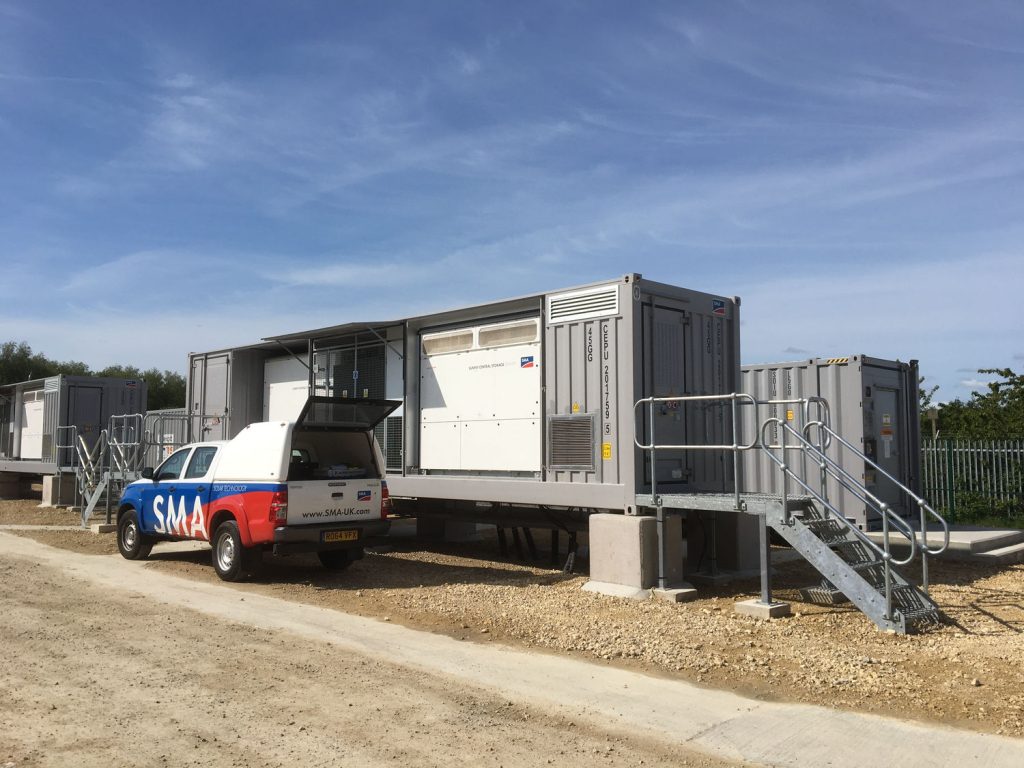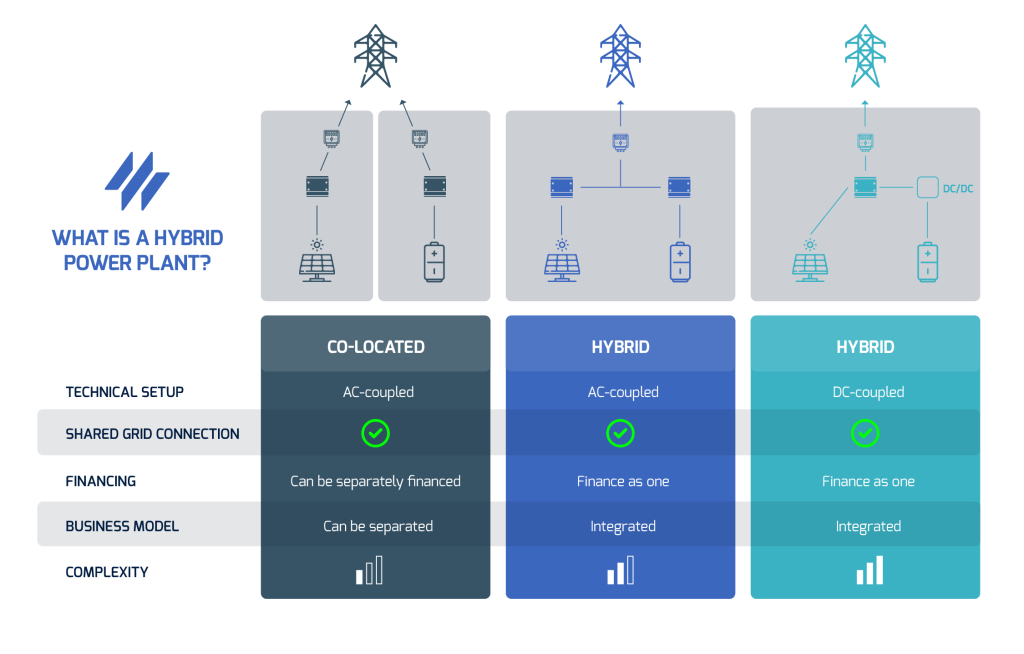Common types of Hybrid Plants, their advantages, and disadvantages

Co-locating renewable assets with storage adds an extra layer of complexity for investors and developers when it comes to deciding which type of asset they want for their business case. Why? Placing two assets in the same site mean that there are different options on how to configure and operate them. The technical set-up will play a role in the achievable contractual arrangements, which is influencing the potential revenue streams and the overall business case of such assets.
The choice between co-located, AC-coupled, and DC-coupled hybrid power plants depends on the specific requirements of the project, the available technologies, and the local conditions. Each type has its own advantages and disadvantages, and the choice depends on factors such as efficiency, cost, scalability, and grid integration.

When we talk about different types of hybrid plants there is one thing what they all have in common: They consist of at least two assets (generation & storage) at one site and are sharing one grid connection point. Let’s have a deeper look in different approaches.
Co-located power plant – AC-coupled:
In this configuration different power generation sources like solar panels or wind turbines and energy storage systems such as batteries are placed physically close to each other. They share one point of grid connection (to optimize grid connection costs) yet managed independently for operational flexibility and simplicity. The two business models (generation and storage) are not hybridized and can be financed separately, which is deemed less risky. The two assets can be managed by different owners and operated accordingly sharing the grid connection to maximize revenue for each of them independently. Yet, it should be well structured (operationally and strategically), which business model would have priority over the other, in case of conflicts.
AC-coupled hybrid power plant:
Same principle as the first type – means two assets (generation and storage) are in the same site, using a single grid connection. In contrast to the former one, the two assets are managed as one hybrid resource at the point of interconnection (POI). The co-located site is optimized as a bundle asset and that’s why it is called ‘hybrid’.
In an AC-coupled hybrid power plant, the different energy sources and energy storage systems are connected to each other via alternating current (AC). This means that the energy from solar systems, wind turbines or other energy producers is converted into alternating current before it flows into the energy storage systems (i.e., batteries). AC-coupled hybrid power plants offer flexibility in integrating different technologies, since they can use alternating current regardless of the type of energy source or storage system. Historically, the AC-coupled variant is predominantly preferred in the market.
DC-coupled hybrid power plant:
In a DC-coupled hybrid power plant, different energy sources and energy storage systems are connected to each other via direct current (DC). This means that the energy from solar systems, wind turbines or other energy generators flows into the energy storage systems in direct current form without first being converted into alternating current. DC-coupled hybrid power plants can be more efficient in certain situations by avoiding the conversion losses that can occur when converting from DC to AC. It’s deemed as the most technically efficient way to set up a site, due to less conversion stages and the kind of equipment needed. Nevertheless, some engineering hurdles to turn theory into practice are still to be solved. Additionally, there is an extra challenge for non-technical shareholders to understand (and finance) the two assets as one, which is contrary to the typical AC set up. Although technical solutions are already in place, it’s a concept that hasn’t reached its maturity yet.
To sum up, one can say that there is no ‘correct’ set-up, neither a ‘one size fits all’ model. When it comes to bringing storage and renewable assets together, since each site has its distinguished technical/commercial characteristics, possibilities, and limitations.
This concerns for example the availability of the grid connection, the set-up of the inverters, or the import/export capacity which can vary significantly. Also financing options would need to be considered, especially as mentioned due to the situation that some technical set-ups have created more comfort to investors than others.
But we can highlight that the know-how of the industry is advanced enough to offer technical solutions that can meet the needs of every developer or investor based on their bespoke circumstances for their specific projects.